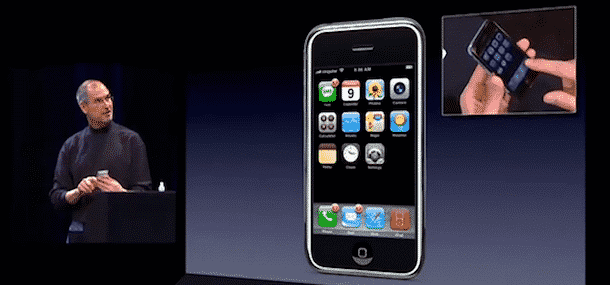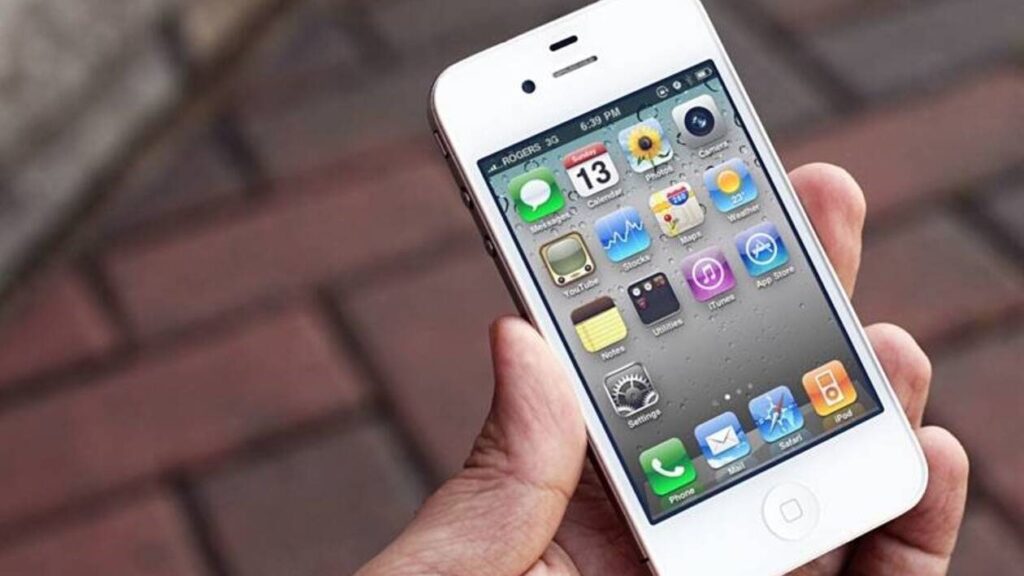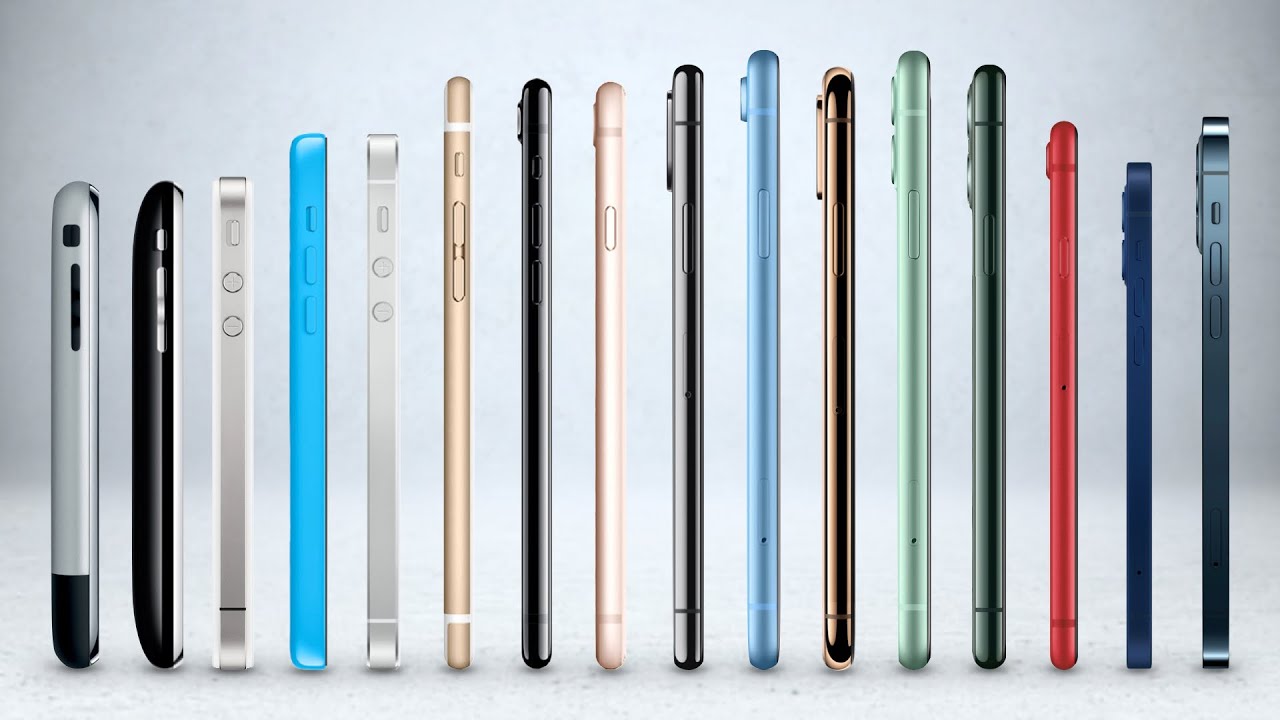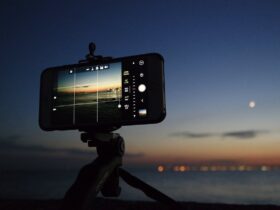iPhone this year it takes place fifteen years. Three decades of innovation across the board: from design to calculation capacity. And above all in the capabilities of the camera: iPhone has accomplished a rapid and continuous evolution. We therefore decided to retrace this journey into the world of Apple and mobile photography. Starting from the camera of the first iPhone that Steve Jobs introduced in 2007up to the one that Tim Cook is supposed to present for iPhone 14 next September.
iPhone, the evolution of the camera from 2007 to 2022
When Steve Jobs introduced the very first iPhone in 2007, he called it a revolutionary (and relatively cheap for the time) device, because it was three things together. “An iPod, a mobile phone, a device for the internet”Repeated the co-founder of Apple. Today, with the iPod discontinued and the attention that Cupertino engineers put into all the details of what has become Apple’s sales hub, the list would be different and longer. And undoubtedly include “a camera“.
But the truth is, in the early years, the iPhone’s camera wasn’t the most important thing. Who remembers the results of those first digital photographs, he understands why. She was not up to par. And the social networks were still not very “centric photos and videos”. So much so that during the presentations of the new devices, Jobs and colleagues spent a few minutes talking about the camera. While today it is cwithin each presentation (of any smartphone).
The first iPhone, which debuted in the United States on June 29, 2007, it only had the rear camera. A 2MP sensor. Which at the time was revolutionary. And now bad. But Apple doesn’t change that when I introduce the successor, iPhone 3G, the following year.

iPhone 3GS it was a revolution because it brought the speed of 3GS communication (and the first version of voice control). But the camera only took a small step forward: 3 MP. For the real leap in quality (not just in terms of Pixel count), we have to wait for the following year: 2010.
iPhone 4, the first real “camera phone”
There isn’t a Millennial that doesn’t remember iPhone 4. Jony Ive’s ‘briquette’ design with glass on both sides, the Retina screen, with al highest pixel density at 326ppi. For the first time the concept of “premium phone“, In everything. And for the first time, the camera takes center stage.

And 5MP rear sensorcapable not only of the best shots of mobile photography, but also of HD video: 720p at 30 frames per second. At the time, only the best TVs made it to 1080p, to give you an idea. Apple is introducing photographs and videos for the first time as part of the iPhone offering. Not just with the rear sensor.
Indeed for the first time comes the 0.3MP front sensor, although to say it was used for mobile photography seems exaggerated. In fact it was mainly used for FaceTimethe video calling service Apple has continued to develop over the past twelve years.
The evolution of the iPhone camera, the 8 megapixel era
iPhone 4 marks a clear dividing line in the evolution of the smartphone camera. Apple would continue to invest in improving the camera every subsequent year. Already with the iPhone 4s we arrive at an 8M main sensorP. And this specification will stay the same for a while, although everything else will improve every twelve months.
In 2012 for example it comes up iPhone 5 the first 2MP selfie sensor, which will remain up to and including the iPhone 6 Plus (and will also return to the first iPhone SE). The iPhone 5s will introduce the first 1080p recording, bringing the iPhone camera in the era of Full HD.

iPhone 6 will end this camera evolution with the 1080 video at 60 frames per second. But above all this generation was the first to have one version Plus/Prowhich will begin to anticipate the novelties of the camera that will arrive one or two years later in the standard version. iPhone 6 Plus was the first iPhone with OIS stabilization.
Seven years at 12MP
iPhone 6s has it first introduced a 12MP camera (12.2MP, to be precise). A number that it also shares with the latest 13 iPhones that debuted last year. That year the main sensor had an aperture of f / 2.2. The base model did not have optical stabilization, although it could record at 2160p and 30 fps like the Plus version. He was also the first with a real selfie sensor, from 5MP.

iPhone 7 brought the focal aperture to F / 1.8something that lasted until 2019. For the first time, even the standard model could take advantage of OIS stabilization, raising the quality especially in videos. And the sensor for i selfie immediately went up to 7MP. The other big news of this generation was the second camera: a sensor telephoto, from 12MP, capable of an optical zoom up to x2.
The next year iPhone 8 and X had a similar photographic department, while raising the frame rate of 2160p videos to 60 fps. The telephoto sensor improves slightly, but the real news is the debut of the Face ID on the iPhone X.
iPhone XR, iPhone 11, 12 and 13 still remain at 12MP. But with the iPhone 11, the first sensor arrives Ultra-Wide for basic models, always 12MP and 120 ° field. Furthermore, the front camera with iPhone 11 reaches 12MP. D.fter iPhone XR, they all have FaceID.
Il telephoto remains an exclusive of the Pro models, which from 11 onwards also have the ultrawide camera – But the zoom sensor in the last two years increases focal length and zoom capability, up to today’s optical x3. Stabilization is the first to arrive on the iPhone 12 Pro Max sensor–shift stabilization, which will then also debut on the standard versions of the iPhone 13.
Evolution of the camera, what do we expect from the iPhone 14?
We have seen how Apple has rarely increased the amount of MP in a camera over the years, preferring to work on other camera qualities. Recently it has changed the stabilization technology, it has introduced several software innovations that are highly appreciated by users. But if he wants to record 8K video, as it sounds, he needs to increase the megapixel count.

For this reason, it looks like iPhone 14 Pro will take the next step in camera evolution – Apple will introduce the first 48MP sensor. The biggest leap in the history of the Apple, which so far had increased by 4MP in 2015 at the most. This autumn it should instead multiply by four the count.
But it seems that, as is the tradition now, this first leap will happen only in Pro and Pro M modelsax (at least until next year). It also appears that Apple is working on one periscope type zoom. But we will not see it fup to at least iPhone 15, according to rumors. Apple should though improve the front camera of all iPhone 14 models, without increasing the megapixel count. We will need to have a wider opening for group selfies, in addition to the addition for the first time of theautofocus.
In fifteen years, the iPhone camera has had a huge evolutiongoing from being almost a last-minute thought in Steve Jobs’ first presentations, to becoming one of the greatest strengths in Tim Cook’s. But there is still a long way to goa: we will keep you updated.
















Leave a Reply
View Comments